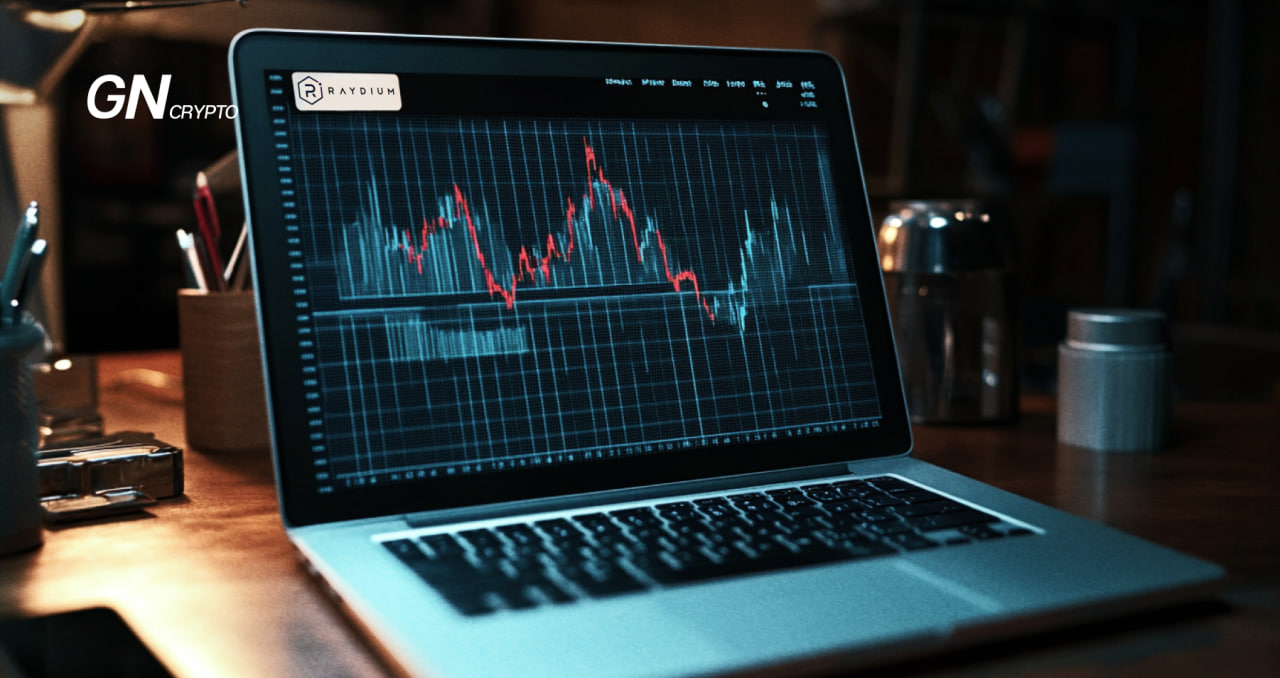What Is Raydium?

Raydium has been one of the top decentralized exchanges by trading volume for a while. As of July 20, 2024, it ranks second after Uniswap with over $1 billion. Although Raydium was launched in February 2021, it’s since the end of last year that it has shown particular growth.
On this page
What is Raydium, and what are the reasons for its rising momentum? We discuss below.
What Is Raydium?
Raydium is a decentralized exchange (DEX) based on the Solana blockchain allowing users to swap assets quickly with low costs, earn rewards in its native token RAY along with other tokens, and access other features. The protocol serves as an Automated Market Maker (AMM), a type of platform that uses liquidity pools to make the asset exchange easier. Liquidity pools are smart contract-based token reserves that users can contribute to. On an AMM, you can see pools with token pairs, choose the pair you want to exchange and make a swap. The exchange will execute requests in seconds through smart contracts. Unlike traditional order book exchanges where buyers and sellers are matched directly, AMMs use algorithm-driven liquidity pools to determine prices and execute trades automatically.
Liquidity pools on Raydium. Source: raydium.io
AMMs are important tools in DeFi as they can support a wide range of assets, facilitate trading, and improve operations in the sector as a whole. In the case of Raydium, for example, it's AcceleRaytor launchpad allows new projects to raise capital and form initial liquidity. After the token sale, projects can set up liquidity pools on the DEX, offering users yield farming opportunities. This aspect of Raydium has played a big role in the memecoin craze. The Solana blockchain, which powers the platform, is known for its fast transactions and low fees, factors that are beneficial for new token launches. In 2024, platforms like Pump.fun have grown in popularity due to allowing users to create their memecoins easily. The growth of memecoins, many of which you can trade on Raydium, has been a major contributor to the platform’s increased trading volume.
The Raydium (RAY) Token
RAY, the utility and governance token of the Raydium platform is used for staking, governance, payments and other purposes. Token holders can stake their assets to earn rewards, get access to bonuses during Initial DEX Offerings (IDOs), and engage in yield farming initiatives.
RAY has a maximum token supply of 555 million, which is allocated as the following:
- 34%: mining reserve
- 30%: partnership & ecosystem
- 20%: team
- 8%: liquidity
- 6%: community & seed (1 year lockup)
- 2%: advisors
At the moment, RAY trades at around $2.5 and has a market cap of over $658 million.
RAY token allocation. Source: icodrops.com
Who Are the Founders of Raydium?
Raydium’s founding team presents themselves to the public using pseudonyms: AlphaRay, XRay, and GammaRay. AlphaRay oversees the strategy and business development of Raydium. He has experience in financial markets and algorithmic trading. In an interview with Solana Podcast, AlphaRay mentioned that the idea for Raydium emerged in 2020 during DeFi summer, a period when decentralized protocols were on the rise. The team aimed to create a platform offering faster transactions and lower fees, along with features like asset swapping and yield farming. Raydium officially launched in February 2021 on the Solana blockchain, raising around $2 million through the RAY token sale, according to ICO Drops.
The Bottom Line
Raydium is among the most active DEXes in 2024. As it operates on Solana, you need a crypto wallet compatible with the blockchain, to use the platform. Raydium allows crypto traders to swap, lend and borrow assets, earn token rewards, and take part in other decentralized finance activities. Using the platform, though, take into account that Raydium, as well as other DeFi platforms, involve risks of hacks, and price volatility. The best approach to balance pros and cons in DeFi is studying the market and having risk management strategies such as researching projects thoroughly, starting with small amounts, and being cautious with newly launched tokens.
The content on The Coinomist is for informational purposes only and should not be interpreted as financial advice. While we strive to provide accurate and up-to-date information, we do not guarantee the accuracy, completeness, or reliability of any content. Neither we accept liability for any errors or omissions in the information provided or for any financial losses incurred as a result of relying on this information. Actions based on this content are at your own risk. Always do your own research and consult a professional. See our Terms, Privacy Policy, and Disclaimers for more details.



























